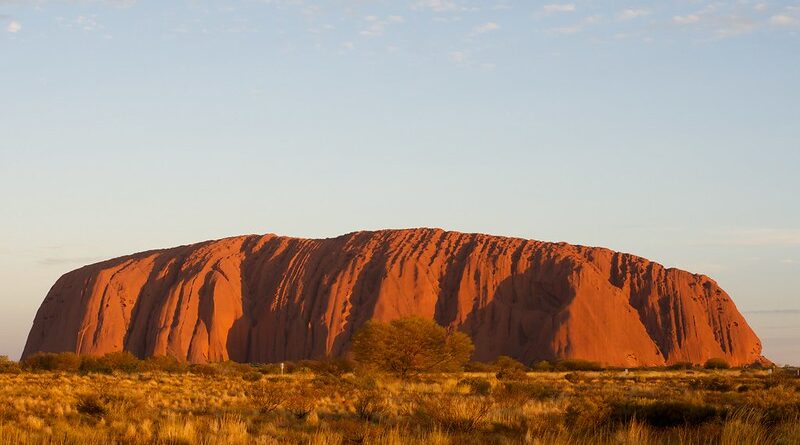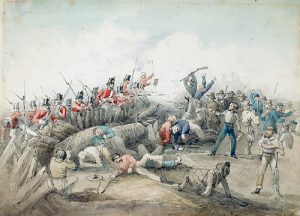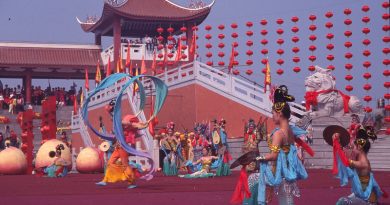Colonial Australia: The Gold Rush And Ned Kelly
The Gold Rush
The Victorian gold rush was quite a significant part of Australia’s history, which began in 1851 when one of the earlier discoveries by Thomas Peters, a hut-keeper found fragments of gold near Specimen Gully. After this monumental discovery, more gold was found in additional cities throughout Australia, including Ballarat, Beechworth, Bendigo, Stawell and Melbourne. With the draw of gold, the population inevitably increased as well, with everyone wanting a piece of the pie.
Ballarat
Ballarat was known as Victoria’s largest inland city during the gold rush, which earned it the name, The Golden City. Gold was discovered here in August 1851 by John Dunlop and James Regan. They found a few ounces in the Canadian Creek. Ballarat saw an enormous population boom and by the end of September, almost 1,000 miners were drawn here with the hopes of discovering gold. Within just two years, in 1853, more than 20,000 miners of varying nationalities inhabited the area and were working in the mine fields.
With the discovery of gold and the many people who flocked to the area to search for it, the Government in Melbourne decided to set up a system of Gold Licenses to allow miners to search for gold on a specified piece of land. Whether or not the miners found gold, they were still required to pay the license fee. If a digger was found without a license, the consequence was to pay a fine or be chained to a log until the fine was paid. The diggers had no say in whether or not they thought these fines were unfair and the government gave the police power to accept checks and due to the shortage of manpower, many police were ex-convicts who operated in a callous way.
June 10th, 1858 marked a momentous day with the founding of the enormous Welcome Nugget, weighing 68,956 grams and contained approximately 68,272 grams of pure gold. At Ballarat’s zenith, the goldfield supported 300 companies and the population reached in the region of 64,000.
Eureka Stockade
The gold miners of Ballarat did not back down easily from authority. They organized a rebellion against the colonial authority of the United Kingdom. This battle is widely known as the Eureka Stockade. On November 30, 1854, Peter Lalor led the miners to the Eureka diggings, where they erected the famous stockade. It was a makeshift wooden barricade, which surrounded approximately an acre of the gold fields. Over the next two days inside the stockade, 500 diggers took an oath on the Southern Cross Flag. They accumulated firearms and built pikes to defend the stockade. In the early hours of the day on December 3rd, the authorities initiated an attack on the stockade. The battle lasted a mere twenty minutes. The diggers were outnumbered by the police troops, who claimed victory over the diggers. Twenty-two diggers and five troops lost their lives that day.
Lalor, the leader of the group escaped the scene, although he too was injured and his arm was later amputated. December 6th saw the implementation of martial law and a committee was selected. In February of 1855, thirteen diggers were sent to trial and all of them were acquitted. The lone person that was imprisoned was Henry Seekamp, the editor of the Ballarat Times, who was found guilty of fictitious libel. Through this trial, all of the demands of the diggers were met and they were given rights that were more appealing to them than what was previously imposed. A bill was passed, where diggers who owned a miner’s right that cost one pound were now allowed to vote. This twenty minute battle led to huge changes in Australian democracy and is noted as the only example of armed rebellion that lead to reform unfair laws.
Bendigo
The second largest goldfield, in terms of production was claimed by the city of Bendigo. 1851 marked the discovery of gold here along the banks of Bendigo Creek. Naturally, this resulted in a major gold rush. The discovery of gold known as alluvial gold (found beneath the surface at the bottom of a creek or stream. It usually takes the form of dust or thin flakes or nuggets), was attributed to two women. Mrs. Kennedy and Mrs. Farrell were the wives of two workers on the Mt. Alexander North pastoral property. The growth of miners within less than one year was astronomical. In December of 1851, there were 800 people on the field, and a mere six months later, 20,000 diggers had been drawn to the alluvial field. Alluvial gold took over the first ten years of the field until 1860 and it’s estimated that it accounted for approximately four million ounces or nearly one fifth of the total gold from the Bendigo Goldfield.
Chinese Population In Bendigo
Chinese people, specifically, were attracted to the Bendigo goldfields in large numbers. They established a large Chinatown on a plentiful gold run to the north east of the city at Emu Point. Within ten years the Chinese miners and merchants made up 20% of the Bendigo population, reaching a high of 40,000 people by 1858.
Due to the soaring Chinese population growth, there was a fear that the Chinese would outnumber the white people and would be the dominant race. Additionally, there was extra competition on the goldfields and in the labor market. This fear led to discrimination by the white miners and therefore, the Chinese miners were forced to pay a poll tax in 1855, which equaled twice the amount of a weekly wage of a skilled worker.
They were involved in other activities on the goldfields that ranged from herbalists and merchants to restaurateurs. As a cultural group they stood out because most preserved their identity and customs. Although rioting didn’t happen very often, there were some instances where full-scale rioting resulted as angry Europeans attacked Chinese diggers at places such as: Buckland River in Victoria in 1857 and Lambing Flat in NSW in 1860-1861.
During the decline of the alluvial gold fields, most of the Chinese gold miners returned home, with only a small population remaining to form the Bendigo Chinese community. This community has continued to influence the city until today. Other ethnic communities also developed including the Germans at Ironbark Gully and the Irish at St Killian’s.
Stawell
A small amount of gold was discovered in Stawell, formerly known as Pleasant Creek Victoria, in May of 1853 by William McLachlan. Although the find was made known, not many people came here then. It was a very isolated area, then where water was scarce and there were no supplies of food while the gold fields of Ballarat, Bendigo, Clunes etc. were operating with stores already established. Some people did come and there were also people passing through here from South Australia to the Victorian gold fields that stopped and found small quantities of gold.
In 1857 the big rush swept in at what became known as Commercial Street, Pleasant Creek. This rush spread across to Deep Lead and was reported at the height of the rush to be 25,000 to 30,000 people there. At the same time, shafts were being sunk around Big Hill and gold was found in the quartz there.
Much alluvial gold was found in the Illawarra/Deep Lead area. The diggers took their gold and left and the field had dwindled away by 1859, lasting less then two years with a very diminishing numbers of diggers. The Quartz Reefs became a stable gold field and companies were created to purchase the machinery needed, which employed many miners. This gold field was known as “Stawell’s Golden Mile” although it extended for a mile and a half or more from the Wonga, along the foot of Big Hill and down Newington Road out to the Three Jacks.
The miners in Stawell wanted more free time and therefore created more entertainment. Stawell is known for The Stawell Gift, which was formed in 1878. It is a fun race between miners at the end of the gold rush and has been raced every year since, except for four years during World War II. Originally it was the townspeople putting together an entertainment package to happen over Easter, complete with ‘special trains’ to the event. Today it is the most prestigious footrace in Australia with a $40,000AUD first prize. The event is sponsored by Australian Post and the finals are televised live around Australia.
Shipwreck Coast
The Limestone coast of South Australia and the south west coast of Victoria is known as the Shipwreck Coast. This particular area of coastline is made up of cliffs, reef, islands and outcrops of rocks. The combination of the coastline, the winds of the ‘roaring forties’ and the often stormy seas, sailing and navigating these waters could be very treacherous. There were over 80 shipwrecks along a 130 Kilometre or 150 Mile stretch of the Victorian coast from Port Fairy to Cape Otway.
The Australian gold rushes of the early 1850s had created increased demand for imports and emigrants. The Australian gold fields’ demand for passenger ships led shipowners such as Duncan Dunbar to order the construction of a clipper from the English shipbuilding firm of James Laing and Sons at Sunderland in 1852. This ship took 16 months to build and was launched in 1853. The Dunbar was wrecked during a period of immense social and economic growth in Australia.
It was not until 1856 that the first visit was made to Australia and by May 1857 the vessel and crew were ready for a second voyage to the colony. However, the return voyage was not as successful. On August 20, 1857, the ship arrived in dreadful conditions. Due to the heavy rain and squalls, visibility was reduced to a few hundred meters and instead of entering the safety of the harbour, the Dunbar crashed onto boulders at the foot of South Head. The impact brought down the masts, huge waves sank the lifeboats and the Dunbar was dragged by the waves. While the ship was lying on the side of the cliffs, the vessel broke up almost immediately. There was one sole survivor, seaman James Johnson, who was washed onto a ledge on the cliff face. Sadly, the remaining 58 crew and all 63 passengers drowned.
Melbourne
Melbourne also saw a huge increase in their population when gold was first discovered there. The town’s population doubled within a year. In 1852, 75,000 people arrived in the colony and this, combined with a very high birthrate, led to rapid population growth. The accelerated population growth and the enormous wealth of the goldfields stimulated a boom, which lasted for forty years and lead to the era known as “marvellous Melbourne.”
In less than a decade, the gold rushes transformed Melbourne from a chaotic colonial service town to a great metropolis with the poise of a modern city. But in the early years of the gold rushes, Melbourne had trouble keeping up with its newfound wealth. By mid-November 1851, Melbourne was deep in the hold of gold-fever. News spread of unimaginable riches being unearthed from Mount Alexander. As the diggers washed handfuls of soil, they found varying sizes of particles of gold, the biggest being the size of a grain of mustard. Gold continued to be uncovered in places such as Emerald Hill, the Melbourne Gaul, in the footpath of Hoddle Street, at Prahran railway station, on Batman’s Hill, on Richmond Hill again (in sinking a cellar), at Templestowe and Heidelberg.
The Royal Arcade And Block Arcade
Two historical and significant structures that were created originally in 1869, represent the gold rush era. For instance, Melbourne’s Golden Mile heritage walk runs through the Royal and Block arcades. The Royal Arcade is beautifully designed and very pleasing to the eye, with high glass roof and windowed stores. The arcade also contains statues of mythical figures Gog and Magog as well as a clock that sounds each hour.
On the other hand, the Block Arcade was known for its well known young hoodlum gang called the “barracade boys” who dealt drugs all day and hired prostitutes at night. This arcade was constructed between 1891 and 1893, which was designed by architect David C. Askew. The inspiration for his design was the Galleria Vittorio Emmanuele in Milan. The result turned out beautifully, with mosaic tiled flooring, glass canopy, wrought iron and carved stone finishings. The exterior is one of the greatest examples of Victorian Mannerist style.
The End Of The Gold Rush
The gold rushes left the legacy of picturesque Victorian towns in the Goldfields tourist region like Maldon, Beechworth, Clunes, Heathcote, Stawell, Beaufort and many other cities With the exception of Ballarat and Bendigo. During the gold rush period, many of these towns were significantly larger than they are today, as the population boom, eventually dwindled down when the people left after the rushes. Most populations moved to other districts when gold ceased to be the driving force to stay in a given region. In contrast, some ghost towns emerged, such as Wakhalla, Mafeking and Steigkitz, which still exist today.
The last major gold rush in Victoria was at Berringa, south of Ballarat, in the first decade of the 20th century. The end of gold mining in Victoria was largely attributed to the depth and cost of pumping. WWI also drained Australia of the labour needed to work the mines. However, the dominant reason was due to the prohibition on the export of gold from Australia in 1915 and the abolition of the gold standard throughout the Empire saw many gold-towns in Victoria die. The decline in gold production never fully recovered. However, as of 2005 the recent increase in the gold price has seen resurgence in commercial mining activity with mining resuming in both of the major fields of Bendigo and Ballarat.
The Ned Kelly Story
 The Early Years
The Early Years
Ned Kelly was born in June of 1855 in Beveridge, Victoria to an Irish family and is known as the most famous bush ranger in Australia’s rich history. His family home is the beginning of the Ned Kelly trail and some would say he was a common hero, while others proclaim he was a common murderer. It was evident that crime ran in the Kelly family. His father was a convict who was arrested for stealing pigs and spent seven years in prison, while his step-father stole horses, in which Ned accompanied him in doing. Additionally, his brothers spent time in prison for crimes and thievery.
A Lifetime Of Crime
Ned attended school at Avenel until his father died on December 27, 1866. With his mother and siblings, they moved to a hut at Eleven Mile Creek, about half-way between Greta and Glenrowan in northern Victoria. It didn’t take very long for Ned to get into trouble with the law.
In 1869 Ned was arrested for alleged assault on a Chinaman and held for ten days on remand but the charge was dismissed. Next year he was arrested and held in custody for seven weeks as a suspected accomplice of the bushranger, Harry Power, who was also Kelly’s mentor, but the charge was dismissed again.
Kelly’s crimes didn’t end there. In 1870 at just fifteen years old, was convicted of summary offenses and sent to prison for six months. On top of that Kelly accepted a mare that he knew was stolen and sentenced to three years in prison. He somehow was always released from prison and in 1874, the same year he was set free from prison, his mother got remarried to George King. Kelly found another partner in crime with his stepfather, King and in 1876, the two assisted each other in stealing horses in an area that was notorious for it.
Another incident occurred in April of 1878 when a police trooper named, Fitzpatrick arrived at Mrs. Kelly’s home and claimed that Ned Kelly shot him. The real facts of the case were never uncovered but nonetheless, family members, including: Mrs. Kelly, her son-in-law, William Skillion, and a neighbour, William Williamson, were arrested and charged with aiding and supporting the attempted murder of Fitzpatrick. They were convicted. Mrs. Kelly was sentenced to three years, while the men were sentenced to six. Ned and Dan Kelly were nowhere to be found, as they had gone into hiding in the Wombat Ranges, but they were still fervently sought after, even offering a reward for information leading to their capture.
In October of that same year, a search was put into place to find Ned Kelly at Stringybark Creek. Next day Kennedy and Scanlon went out on patrol, leaving Lonigan and McIntyre at the camp. The Kelly gang surprised the camp and when Lonigan drew his revolver Ned shot him dead. McIntyre surrendered. When Kennedy and Scanlon returned, they did not surrender when called on, and in an exchange of shots Ned killed Scanlon and mortally wounded Kennedy. Ned later shot him in the heart, claiming it was an act of mercy. McIntyre escaped to Mansfield and reported the killings. This is known to be the biggest mass murder of police in the state even today. Ultimately, this fueled the Ned Kelly fire even more, increasing the reward amount and motivating the police to be merciless in their search to capture these outlaws. To honor the policeman that lost their lives (including Police Sergeant Michael Kennedy, and Mounted Constables Thomas Lonigan and Michael Scanlan), a monument was erected.
Ned Kelly Fights For Justice
Later that same year in December, the Kelly gang was at it again. They committed scores of more crimes, from taking over a sheep station to holding up a bank in Euroa. They continued forward and in February of 1879, the gang took possession of a police station in Jerilderie and then went on to hold up a bank while wearing police uniforms in New South Wales.
Kelly, however felt justified in what he was doing. Ned had given a written statement of over 8000 words to a bank-teller. It is unclear what happened to the original and an earlier statement that Kelly sent to Donald Cameron, M.L.A. (1877-1880), but long after Kelly’s death, copies made by a clerk in the Crown Law department became available. Known as the ‘Cameron letter’ and the ‘Jerilderie letter’, they are Kelly’s explanation and justification of his conduct. This was seen as Kelly’s manifesto and plea for justice for his families and other poor Irish settlers.
The Last Days Of Ned Kelly
1880 marked the final year of Ned Kelly’s life. In Glenrowan, Byrne and Dan joined Ned and Hart, where they took possession of the hotel run by Mrs. Ann Jones and detained approximately sixty people. They schemed to ruin the railroad tracks to derail a special police train coming into Glenrowan and declare a republic of North East Victoria. However, before anything happened, Thomas Curnow, a man that Ned Kelly let leave the hotel with his wife child and sister, leaked the information to the train crew. Under Superintendent Hare, the police encircled the hotel and shooting began. Hare was shot in the arm and Ned was wounded in the foot, hand and arm. Dan, Byrne and Hart took sanctuary in the hotel and Ned went into the bush.
In Melbourne on October 28th-29th 1880, Kelly was tried for the murder of Constable Thomas Lonigan at Stringybark Creek. He was found guilty and the judge, Redmond Barry, sentenced him to death. Kelly was hanged at the Melbourne gaol on November 11th, 1880. His last words uttered were “such is life.” Ned Kelly was only twenty-five years old.
The Ned Kelly Trail
Today, for those who wish to explore Ned Kelly’s life in person and in more detail, the Ned Kelly trail was created to explore all of the various towns and cities he visited and lived his life, starting all the way back to the home he was born in, in the town of Beveridge. Along the trail, there are stops in Euroa, where Kelly held up a bank, Glenrowan, where the Kelly gang made their last stand against the police. Then it goes on to Beechworth Gaol, the area where Ned, his mother Eileen and Kelly supporters served sentences. The Kelly trail continues on to reach the Kelly Tree at Stringybark Creek, where the gang became known as Australia’s most wanted outlaws after three policemen were killed.
Other historical sites can be viewed along the way, such as the graves and memorial in honor of the three policemen who lost their lives, the bootmaker’s shop in Arundel Street where Ned hid to escape the police, the Costume and Pioneer Museum, Benalla cemetery, where many of the people part of the Kelly period are buried and The “Echoes of History-Historical and Cultural Precinct,” which includes The Gold Office and Treasury, Warden’s Office and Bourke Museum to name a few.
The last few places on the trail are Power’s Lookout, where Kelly’s mentor Harry Power hid himself away from the police. It’s known to have incredible views across the mountains and it’s obvious why Power chose this place to hide away. Finally, the end of the trail is The Old Melbourne Gaol, where Ned Kelly was hanged, as well as 135 more inmates. Although there were 30,000 people that signed a petition against Ned Kelly’s hanging, his fate was inevitable.








